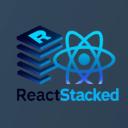
Top Next.js Trends To Watch In 2025
Discover the top next.js trends for 2025, including next.js 15, server components, turbopack, and ai tools. elevate your full-stack web development.

0
0

Discover the top next.js trends for 2025, including next.js 15, server components, turbopack, and ai tools. elevate your full-stack web development.
